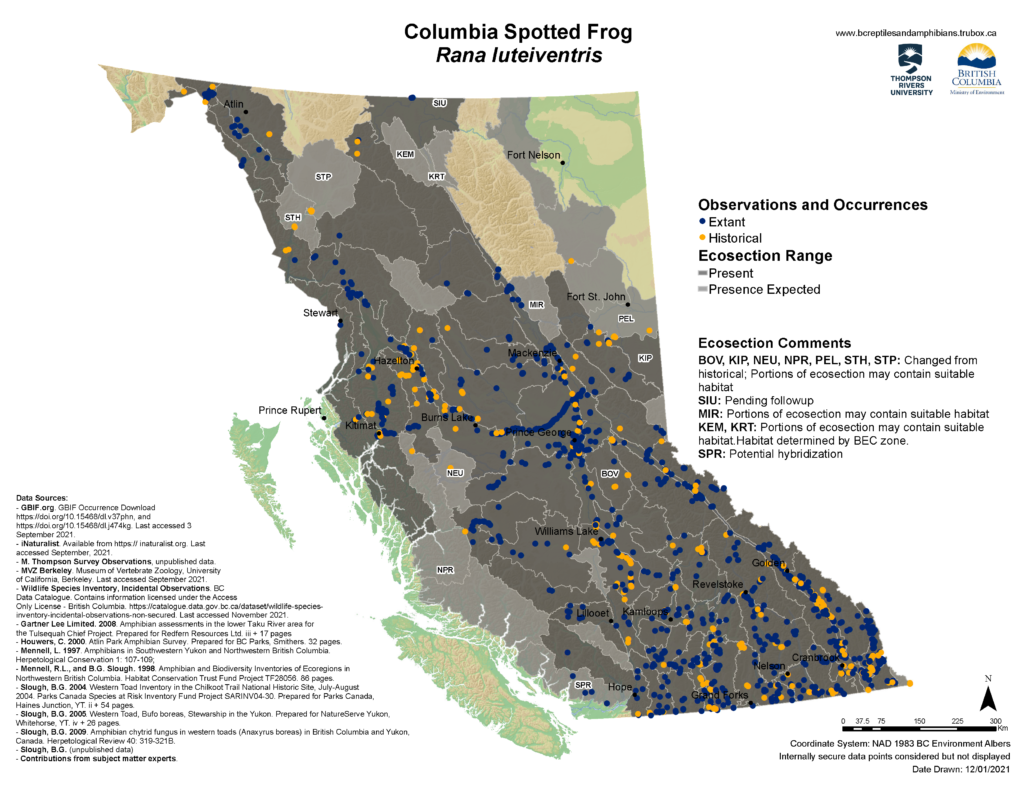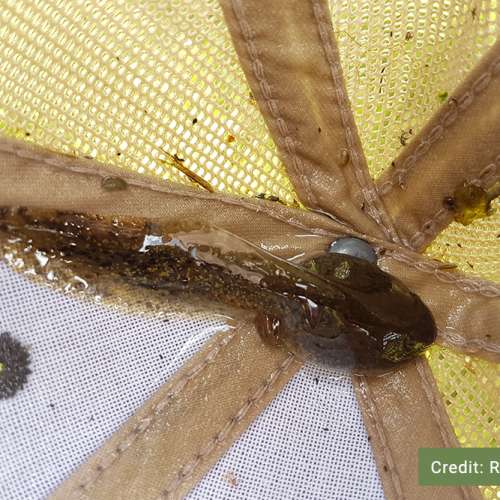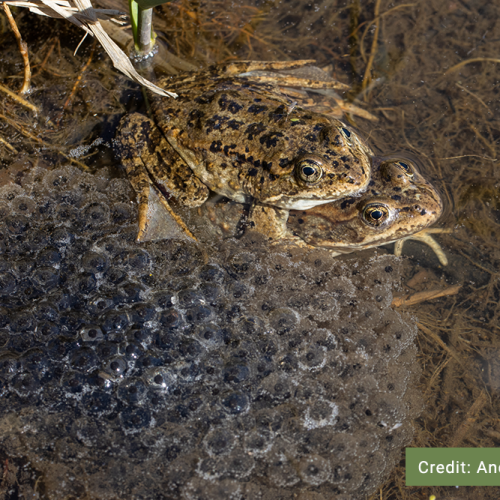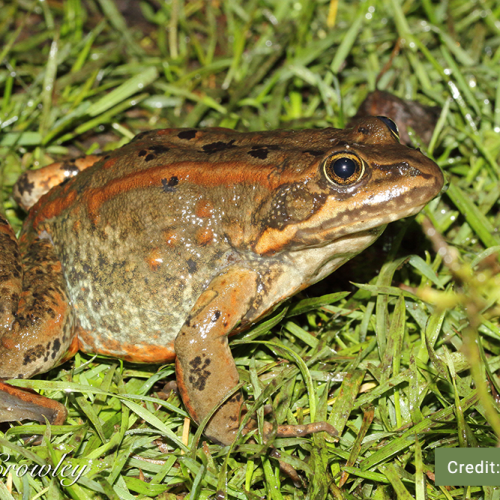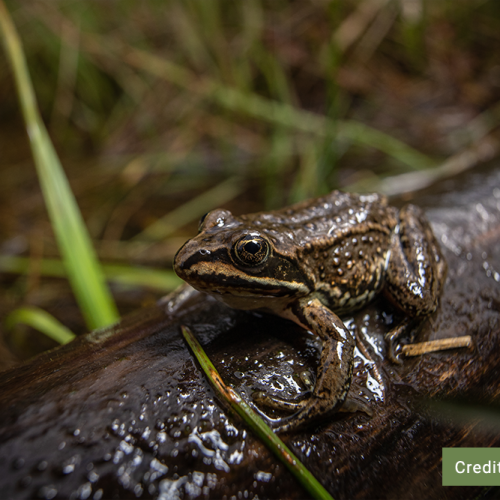Credit: Kristin Lohr
Columbia Spotted Frog
Rana luteiventris
Description
Other names: Spotted Frog, Western Spotted Frog
The Columbia Spotted Frog is an intermediate-sized frog reaching up to 9 cm in body length. As with most frogs, the males tend to be smaller than the females. They have dorsolateral foldsDefinition:Visible raised ridges of skin that run down part of all of the length of the back, usually on the sides., eyes that are angled upwards, a prominent tympanumDefinition:The ear opening in many amphibians, reptiles, and insect. In amphibians, it is normally covered by a circular membrane., and a dark mask with a light stripe on the upper jaw. The toes of the Columbia Spotted Frog are completely webbed to accommodate its aquatic lifestyle. They are olive, light brown, or tan with ill-defined black spots and black-mottled sides. They may display red tubercles and red, salmon, or orange pigmentation on the belly. Columbia Spotted Frog tadpoles have long tails with a large tail fin. Their bodies are tan, light brown, or green with gold and bronze flecking, with dark spots or flecking on the tail fin and a white-cream belly. Tadpoles can reach up to 10 cm in length before metamorphosis.
Listen to the Indigenous words for “frog” here!
Columbia Spotted Frog Call
The call of the Columbia Spotted Frog is a series of short grunts or clucks that build in intensity, lasting up to 10 seconds. It may resemble a woodpecker drumming in the distance. It is not known if the call of the Columbia Spotted Frog differs substantially from the Oregon Spotted Frog.
The Columbia Spotted Frog does not have an amplifying vocal sac, so their calls are quieter than other frog species.
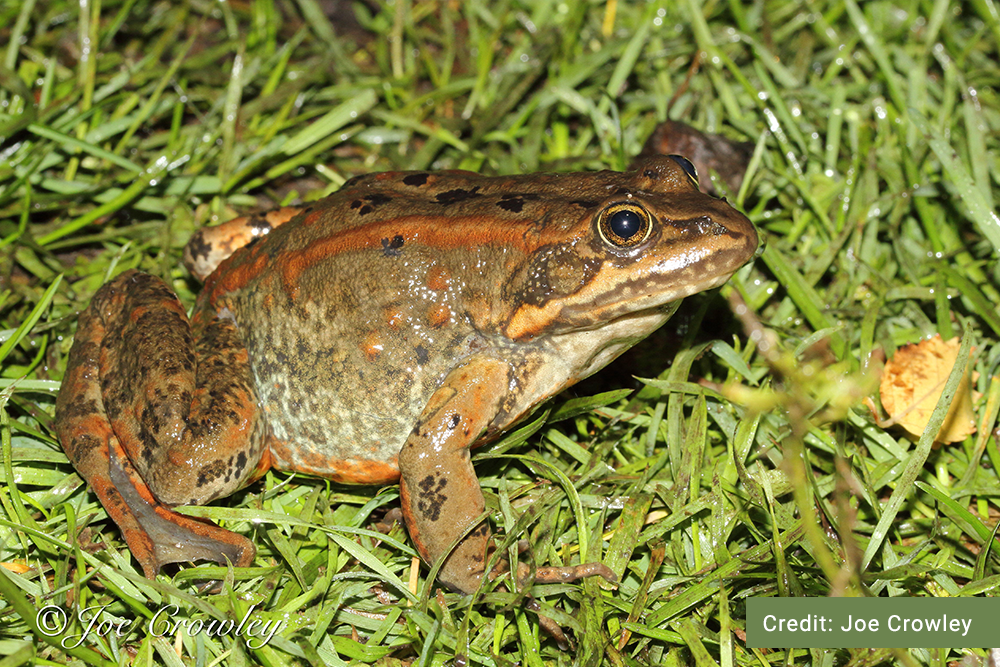
Columbia Spotted Frog Call
The call of the Columbia Spotted Frog is a series of short grunts or clucks that build in intensity, lasting up to 10 seconds. It may resemble a woodpecker drumming in the distance. It is not known if the call of the Columbia Spotted Frog differs substantially from the Oregon Spotted Frog.
The Columbia Spotted Frog does not have an amplifying vocal sac, so their calls are quieter than other frog species.
Similar Species
There are two species of Spotted Frog in British Columbia, the Columbia Spotted Frog and the Oregon Spotted Frog. The Columbia Spotted Frog has a larger head than the Oregon Spotted Frog, and in Canada, Columbia Spotted Frogs do not have mottling at the throat; although some populations in the United States do. The distributions of the Columbia Spotted Frog and the Oregon Spotted Frog do not overlap in British Columbia, so the best way to distinguish these two similar species is by location.
The Columbia Spotted Frog also resembles the Northern Red-legged Frog; however, the latter has incomplete webbing on the toes and does not have upturned eyes. Red-legged Frogs are always yellow on the belly with red on the underside of the hind legs. The Columbia Spotted Frog also may resemble the Northern Leopard Frog, but the Leopard Frog has much more distinct spots surrounded by light rings. The other true frogs in its range do not have spots.

Columbia Spotted Frog
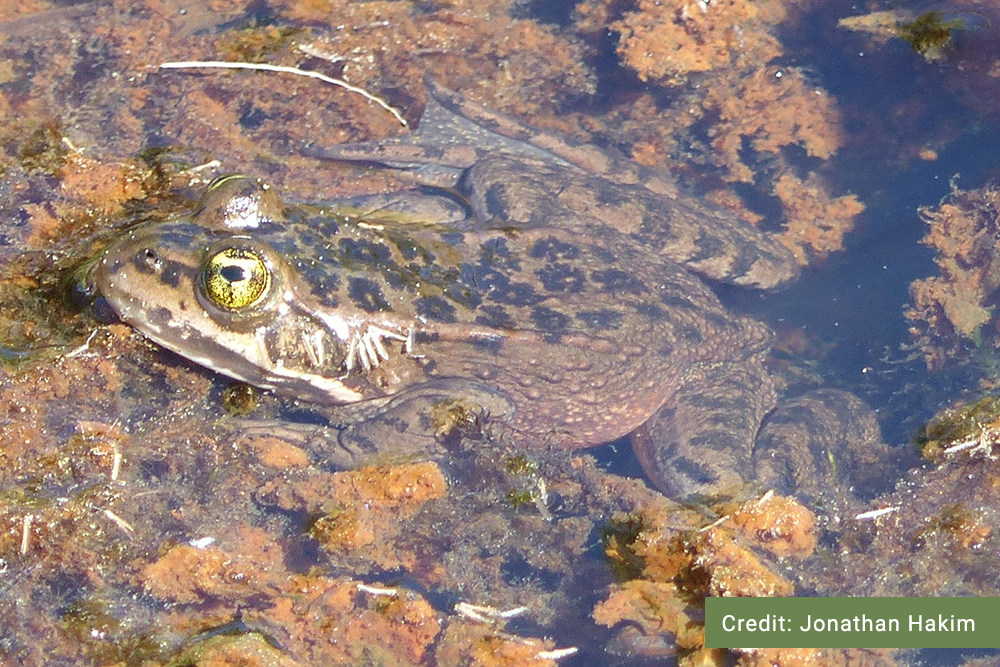
Oregon Spotted Frog

Northern Red-legged Frog
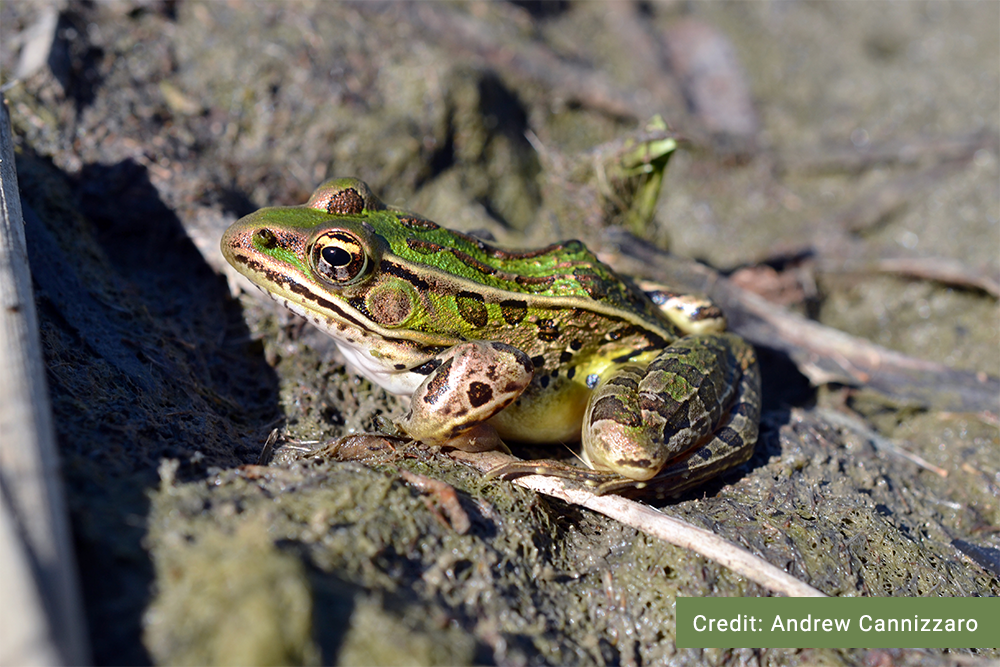
Northern Leopard Frog
Distribution
Habitat
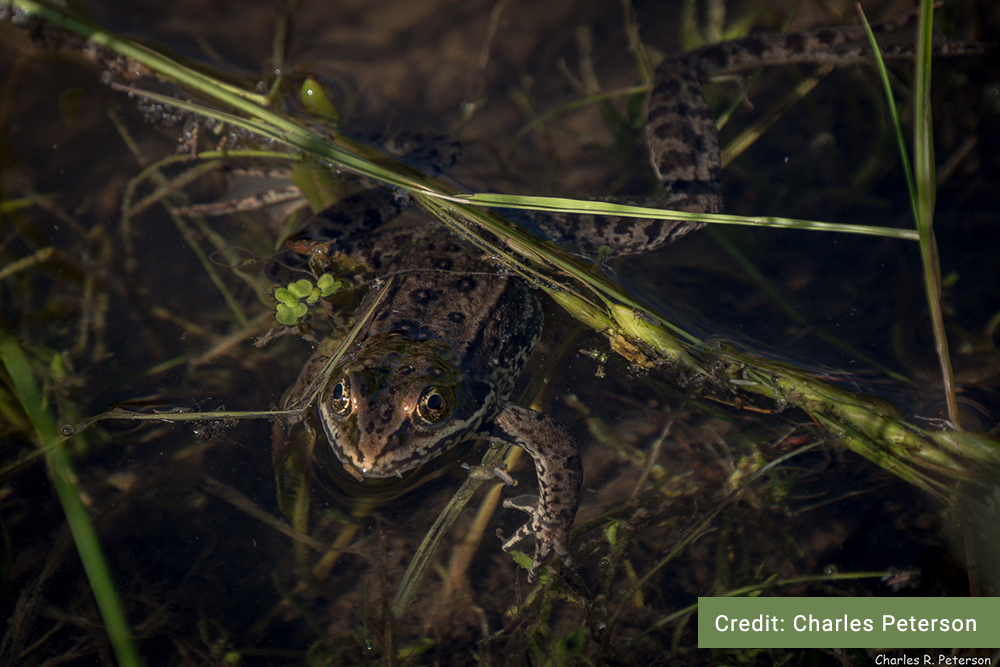
Reproduction
Breeding occurs in the early spring immediately after ice melts from the wetlands. Males call to attract females, and fertilization occurs externally via amplexusDefinition:The mating position of frogs and toads in which the male clasps the female about the back. in aquatic habitats. The female may lay up to 1,500 eggs in a large gelatinous mass that she attaches to vegetation just below the surface of the water. Eggs are dark brown/black on top and pale-yellow underneath. Hatching occurs after 2-4 weeks and tadpoles metamorphose 3-4 months after hatching. In colder climates, tadpoles may hibernate overwinter before transforming. Males reach sexual maturity at 2-4 years, while females are not sexually mature until 4-6 years. The Columbia Spotted Frog can live for over 10 years.
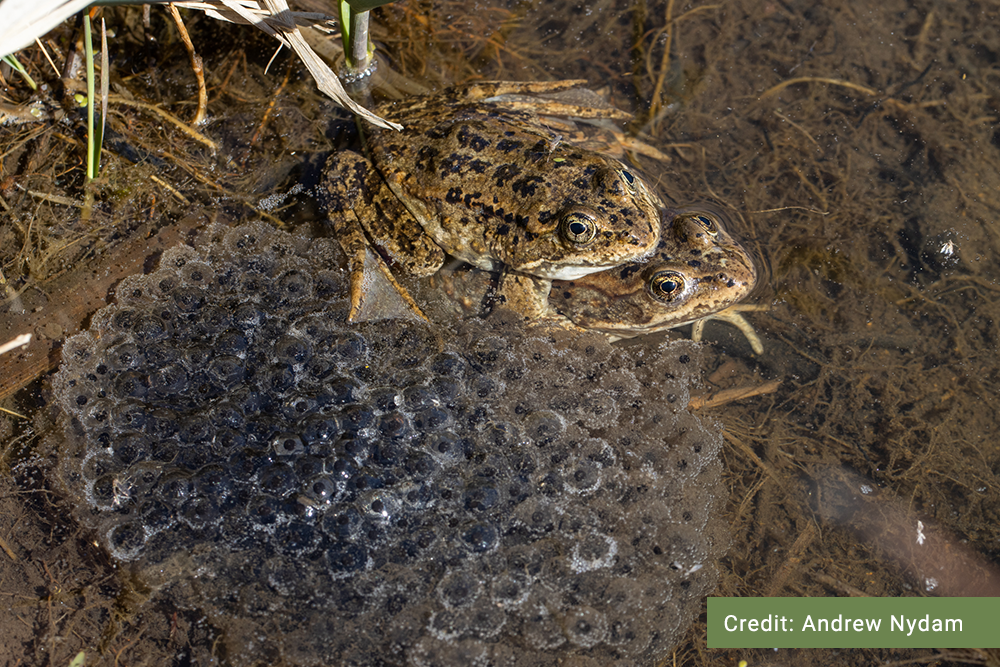
Diet
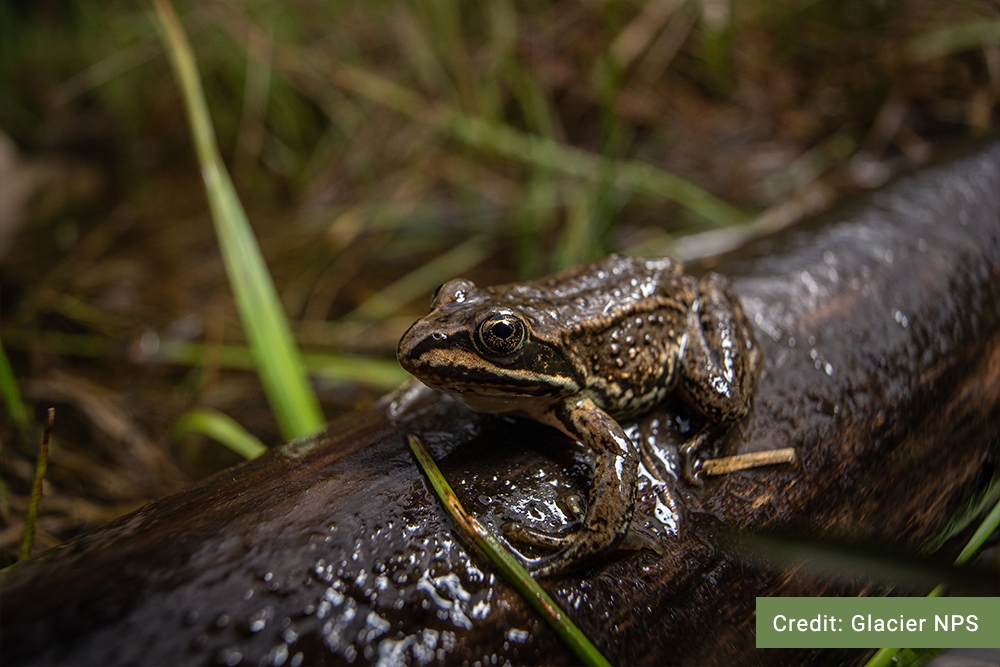
Conservation Status
Global: G4 (2008)
COSEWIC: NAR
Provincial: S5 (2016)
BC List: Yellow
Learn more about conservation status rankings here
Threats
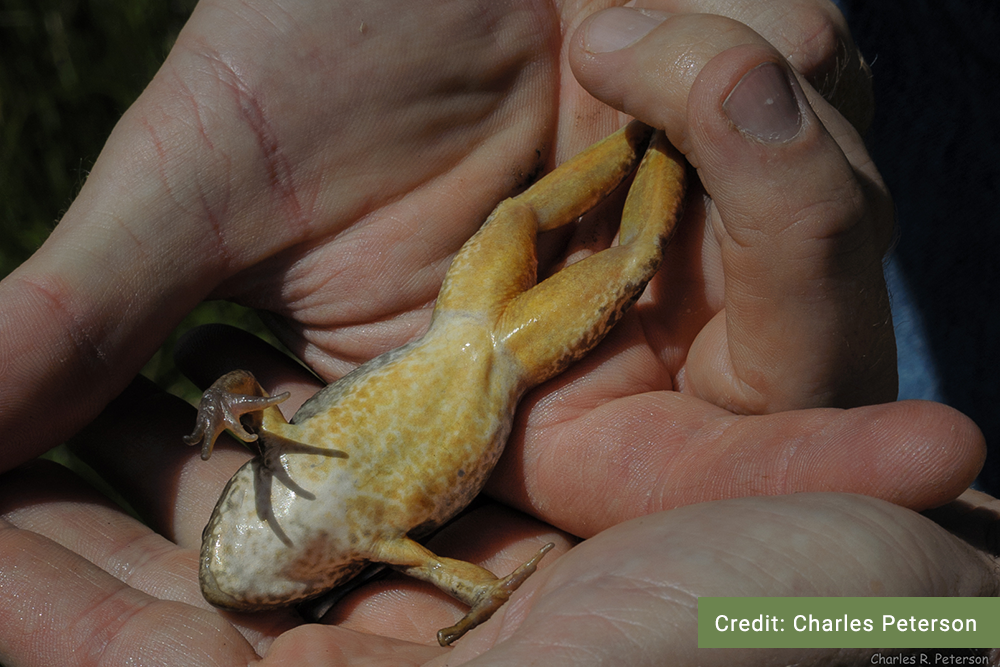
Did You Know?
Fact #1
Fact #2
Species Account Author: Marcus Atkins
Available: https://a100.gov.bc.ca/pub/eswp/ (accessed May 21, 2021).
Matsuda, Brent M., David M. Green and Patrick T. Gregory. 2006. Amphibians and Reptiles of British Columbia. Royal BC Museum Handbook. Victoria.
http://linnet.geog.ubc.ca/efauna/Atlas/Atlas.aspx?sciname=Rana%20luteiventris
https://www.naturewatch.ca/frogwatch/columbia-spotted-frog/
http://www.canadianherpetology.ca/species/species_page.html?cname=Columbia%20Spotted%20Frog
https://a100.gov.bc.ca/pub/eswp/search.do;jsessionid=502F4E3D88C6E320D104532BF89C2A61
http://a100.gov.bc.ca/pub/eirs/finishDownloadDocument.do?subdocumentId=696

